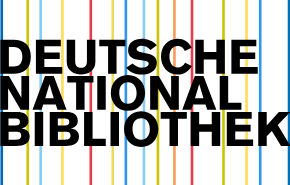EVOLUTION OF TRANSLATION STUDIES
DOI:
https://doi.org/10.55640/Keywords:
translation studies, literal translation, development of translation, theories of translation, translation representatives.Abstract
The article presents an evolution and the origins of translation studies, and discusses a range of theories, techniques, and theoretical frameworks that influenced its development. Despite being a relatively new discipline, translation studies have seen significant changes. The need for this profession in the modern, globalized world has brought the early theories of translation under examination because they had to take into account much more than just word equality in order to meet the demands of the complex and dynamic field of translation.
References
1.AbdullaevV. V. Translation studies today: eternal problems and new challenges. Russian Journal of Linguistics, 2019. – pp. 295-327.
2.G‘afurov I., Mo‘minov O., Qambarov N. Tarjima nazariyasi.–Toshkent: Tafakkurbo‘stoni, 2012. – 216 b.
3.G‘ofurova G. O‘zbekistonda tarjimaning rivojlanishi. – Toshkent,1973. –236 b.
4.Holmes J.S. The name and nature of translation studies. In: Venuti L, editor. The Translation Studies Reader. – London & New York: Routledge; 2000. – pp. 172-176.
5. Jakobson R. On linguistic aspects of translation. In: Venuti L, editor. The Translation Studies Reader. – London& New York: Routledge, 2000. – pp. 113-118.
6.Nurmatov T.S., Kurpatov O.I. History of translation: subject, methodology, place in the science of translation. Bulletin of Moscow University. Translation Theory, 2021.– №2. – pp. 3-22.
7.Sharipov J. Badiiy tarjimalar va mohir tarjimonlar. – Toshkent, 1977. – 340 b.
8.Касимова Раъно Рахматуллоевна. Таржимашунослик вафанлараро интеграция // Tafakkur manzili respublika ilmiy-uslubiy jurnali. 10-son, 1-jild dekabr-yanvar, 2022-2023. 1-qism. – B. 288-293.
9.Rakhmatulloevna, K. R. (2022, January). An effect of psychology on a work of art and translation studies. In Integration Conference on Integration of Pragmalinguistics, Functional Translation Studies and Language Teaching Processes (pp. 197-199).
10.Kasimova, R. R. (2022). Comparative study of a Writer’s and Translator’s Psychology in the English translation of “Kecha va Kunduz”. VI. Uluslararasi Türklerin Dünyasi Sosyal Bilimler Sempozyum. Moldova, 13-15.
11.Kasimova, R. R., & Ziyadullayeva, A. A. (2022). The Peculiarities of Comparative Historical Method and its Types. International Scientific Journal Theoretical & Applied Science, МА. USA.–Published, 15, 336-345.
12.Kasimova, R. R., Ziyadullayev, A. R., & Ziyadullayeva, A. A. (2021). The nature of the culture bound words and problems of translation. International Scientific Journal Theoretical and applied science, МА. USA.–Published, 31, 401-405.
13.D.Z.Olimova .(2023) .Synchronization mechanism in simultaneous interpreting. Innovative Development in Educational Activities,2(6), 368-372.
14.Olimova Dilfuza Zokirovna,(2022). Xorijiy tillar ta’limida talabalarda mustaqil organish konikmalarini shakllantirishning ahamiyati. Центр Научных Публикаций (buxdu. uz), 5(5).(2021)
15.Nazarova, Gulbaahor. "Lexical Transformations, Their Types And Role In The Process Of Translation." Центр Научных Публикаций (buxdu. Uz) 47.47 (2024).
16.Ganieva O. K. Depiction Of Relations Between A Person And Society In American Realistic Literature //Scientific Bulletin of Namangan State University. – 2020. – Т. 2. – №. 8. – С. 215-220.
17.Rajabovna, Mekhriniso Kilicheva, And Shakhnoza Sharopova Shavkatovna. "An Analysis Of Self-Help Genre On The Example Of “How To Win Friends And Influence People” By D. Carnegie." Imras 7.6 (2024): 461-466.
18.Narzullayeva, Firuza. "Konnotativ ma'noning nutqda voqelanishi." ЦЕНТР НАУЧНЫХ ПУБЛИКАЦИЙ (buxdu. uz) 8.8 (2021
19.Uktamovna, K. M. (2021). THE IMPORTANCE OF DICTIONARIES AND ITS TYPES. Academy, (1 (64)), 61-63.
20.Olimova Dilfuza Zokirovna. Continuity and discreteness of simultaneous interpreting. Theory And Analytical Aspects Of Recent Research International scientific-online conference,1(2),729-733.
21.Khusenova, M. U. (2024). Lexical-Semantic Features of Astronomical Terminology in the English Language. American Journal of Language, Literacy and Learning in STEM Education, 2(11), 279-282.
22.Akmal Ziyodullaev. Eponyms in onomastics: linguistic, cultural, and historical dimension // American Journal of multidisciplinary bulletin – 2024. Vol. 2 No. 5. P.56-61. https://advancedscienti.com/index.php/AJMB/article/view/327
Downloads
Published
Issue
Section
License

This work is licensed under a Creative Commons Attribution 4.0 International License.
Authors retain the copyright of their manuscripts, and all Open Access articles are disseminated under the terms of the Creative Commons Attribution License 4.0 (CC-BY), which licenses unrestricted use, distribution, and reproduction in any medium, provided that the original work is appropriately cited. The use of general descriptive names, trade names, trademarks, and so forth in this publication, even if not specifically identified, does not imply that these names are not protected by the relevant laws and regulations.







